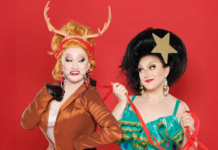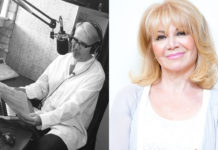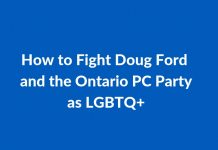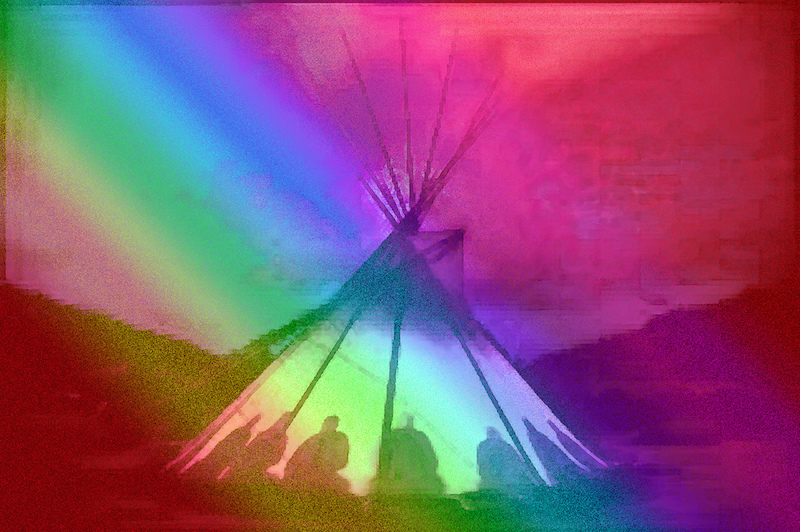
By Jeffrey McNeil-Seymour
Last year, Artist Jason Mraz who is non-Indigenous, declared feelings of alignment with the term, two-spirit and the teachings he received from his Indigenous* wife. He lamented that it more fully captured how he felt inside, more so than what the identity construct bisexual could ever do on its own. Everyone (myself included) was waving fingers for a good couple of days over this Mraz. Some were white-splaning “appreciation versus appropriation” narratives, while others were just outright bold in saying, “Well we won, get over it”.
*(Indigenous has replaced Aboriginal as the umbrella term used to identify persons of First Nations, Metis and Inuit ancestry).
What the Mraz moment revealed was that layer after layer, a new, even more thinly veiled homo-nationalist and queer settler-colonial elitist veneer existed. Resultant social media moments saw assertions take what they wanted from Indigenous culture because they can. It also saw Indigenous people naming Mraz’s appropriation marked as being violent towards and excluding of the Queer-Settler body.
The latter is what happened to me when I made the assertion, that while two-spirit captures a lot of really awesome things, it inherently recognizes two-spirit people as being from here since time immemorial. Our diverse approaches to resistance and their resultant performances is a testament to Indigenous LGBTQ Elders who knew the urgency of naming a space just for Queer Indigenous people.
At a mid-90’s annual gathering for Indigenous self-identified Lesbian, Gay, Bisexual, Transgender, Queer (LGBTQ) persons, our two-spirit Elders agreed on “two-spirit” as a universal name for all, and assert space under the LGBTQ umbrella. This name was visioned to create distance from Squaw, Faggot, Wagon-Burner, tranny, dyke and other harmful anthropological words like Berdache. Berdache’s root attached prostitution to our bodies, contributing to Canadian legacies of persistent colonial technologies that dehumanize Indigenous persons using sexual conquest. It was critical in that it contributed to a very specific resistance language. The naming of our unique Queer Indigenous space and place needed the ability to empower and heal in the oration of it. Two-spirit and coming into our identity means belonging to our ‘self’, family, community and nations.
The reclamation of Indigenous gender fluidity and sexual identities has not only been about our clap-back at our own Indigenous communities, but also a compassionate interruption of Church and Davie streets gay and lesbian villages that have connected us to our LGBTQ found family. It was during my time on Davie St. in Vancouver that I first heard of this magnificent word, Two-Spirit – finally something that captured both my Secwepemc community, as well as my fourth-generation English queer-settler body.
I knew I wasn’t gay. I knew I wasn’t trans.
In the gay subcultural groups, I didn’t see myself reflected in the faces predominating my preferred haunts of that time. There was an incredible need for a name exclusive to my Indigenous Queer body to mark my journey as distinct (but not different) from LGBTQ. Distinct because two-spirit identity is about our gender and sexuality and their intersection of how we contribute humbly to our relationships to family, land, water, community, culture, children, food security, warrior-status and the cosmos. I say not different because our communities remain under state surveillance and we were all marked as deviant at one time.
Don’t Leave Us Behind.
The plight of Indigenous people in Canada is usually viewed through poverty porn-like news channels. The average Canadian cannot name the Indigenous nation in which they now reside, let alone speak the language. The average Canadian wouldn’t be able to tell anyone much of anything beyond Native stereotypes. To the average 20-something Torontonian shop clerk, whose casual, everyday reinforcement of the extinction myth during those first hilarious encounter with my Indian Status Card (during weekly, sometimes daily retail therapy expeditions), happens without a glimmer of recognition of their immediate circumstances.
Sarah Silverman, in one of her stand-up specials, said that if a bunch of kittens and puppies were the ones dying of AIDS in Africa, “We’d have that shit solved in a week.” How true. Imagine if Canada had reserves of kittens and puppies. Would Sarah MacLauchlan sing for us then? At present, two-spirit health is dire in so-called British Columbia (the province illegally displaces and surveille Indigenous people as it has only four small modern treaties). The lived reality for two-spirit young people whose substance use, homeless situation, and suicide ideation and completion are the highest of any LGBTQ youth group in Canada.
The Indian Wars are alive and well in Canada as well as in Canadian LGBTQ Imagination.
We’re all complicit in the hidden evils of Canadian National Imaginaries as we gain distance from Harpers 2008 apology for the Indian Residential Schools of Canada. As an Assistant Professor of Social Work and a community-based researcher with over 20 years of departures and arrivals with gay and lesbian villages, my analysis of the reality of the relationship between Indigenous and LGBTQ bodies is not great where tokenized gestures of box-checking and meme posting for optics of social justice and inclusion occur.
While living in Kamloops, in so-called British Columbia for the past three years, during a rigorous and personal research project about themes of anti-indigenous racism in rural BC, the moment I gave my address (that just so happened to be on my Indian Reserve) during cruising sessions on the apps we use, the overwhelming amount of those moments turned into me being ghosted. My self-worth did not always escape unharmed.
Through the dominant white gaze of colonial LGBTQ desires, we are marked through collective memory as taboo. Our bodies become exotified like our land marked for conquest. In LGBTQ historical recounts, our pre-contact community immersion and valuing of our personhood excavated and appropriated by LGBTQ advocates, as some sort of archeological evidence, like they themselves have always been here too.
Indigenous LGBTQ and two-spirit peoples have been on the frontlines since always.
We are here because we don’t have a choice of being anything other than who we are becoming. From the moment we are born we are marked by the state, documented and tracked with card and number. We unsettle all that with the fluidic ways Indigenous LGBTQ and two-spirit people perform their walk or sashay, and in some cases literally floating through this world – which is a testament to our two-spirit Ancestors.
Two-spirit holds space for us to remember our unique status as we interrupt homophobia and transphobia in our urban and reserve communities with our beauty and resiliency. It should also heart-fully remind our Settler friends of our immeasurable resiliency in the face of being the most at risk of Canadian colonialism. Two-spirit is about coming home and coming in. It’s about our interrelatedness and thus inherent responsibilities to all our relations, and that means you do too.
A Prophecy.
A favourite prophecy of mine states that when the great shift happens there will be a predominance of two-spirit people. Never before has there been a time for our LGBTQ2S community to walk as freely as we do in North America and most of the western world. I believe we are in that moment now because of those LGBTQ Elders who literally died for all of us.
I believe this prophecy is for all of us, because it challenges us to pick up the reigns of leadership and that we are the ones who help people through. The fact that so many of us exist here now means for me that we have entered the first stages of that shift to our next expression. Onwards to a world re-
About Jeffrey McNeil-Seymour
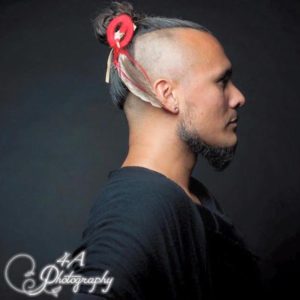
Jeffrey McNeil-Seymour – a two-spirit Tk’emlúpsemc and fourth generation English Settler – is nominated to the Traditional Family Governance Council for the Stk’emlupsemc

